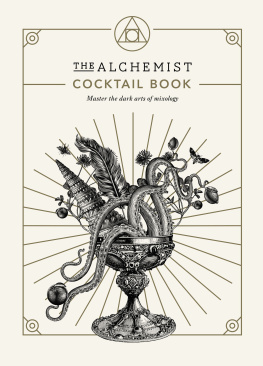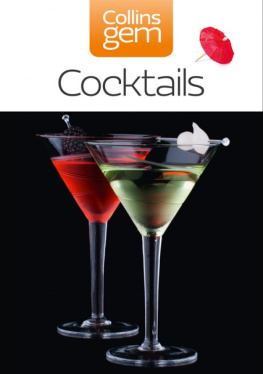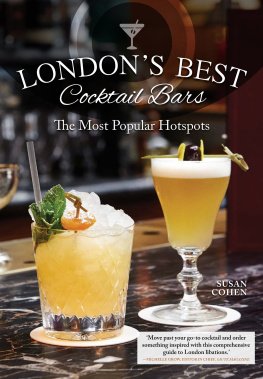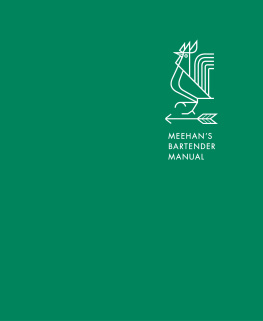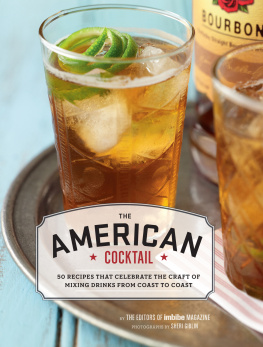THE CURIOUS
BARTENDER
VOLUME I

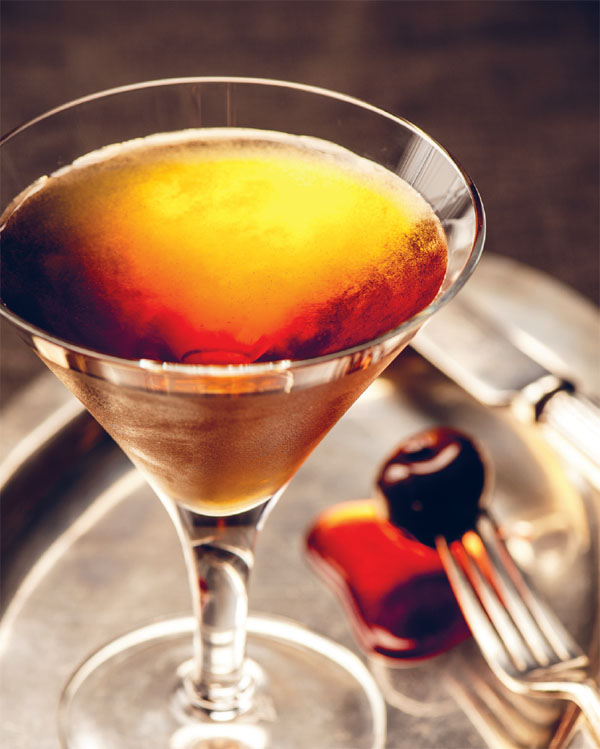
Designer Geoff Borin
Editor Rebecca Woods
Head of Production Patricia Harrington
Art Director Leslie Harrington
Editorial Director Julia Charles
Publisher Cindy Richards
Prop Stylist Sarianne Plaisant
Indexer Hilary Bird
First published in 2013
This updated edition published 2016
by Ryland Peters & Small
20-21 Jockeys Fields
London WC1R 4BW
and
341 East 116th Street New York, NY 10029
www.rylandpeters.com
20 19 18 17 16 15 14
Text Tristan Stephenson 2013, 2016
Design and commissioned photographs
Ryland Peters & Small 2013, 2016
All photography by Addie Chinn, apart from:
Peter Cassidy: backgrounds on
Laura Edwards: backgrounds on
Kate Whitaker: backgrounds on
Illustration credits:
istockphoto/nicoolay
The authors moral rights have been asserted. All rights reserved. No part of this publication may be reproduced, stored in a retrieval system or transmitted in any form or by any means, electronic, mechanical, photocopying or otherwise, without the prior permission of the publisher.
eISBN 978-1-84975-906-9
ISBN: 978-1-84975-437-8
A CIP record for this book is available from the British Library.
US Library of Congress CIP data has been applied for.
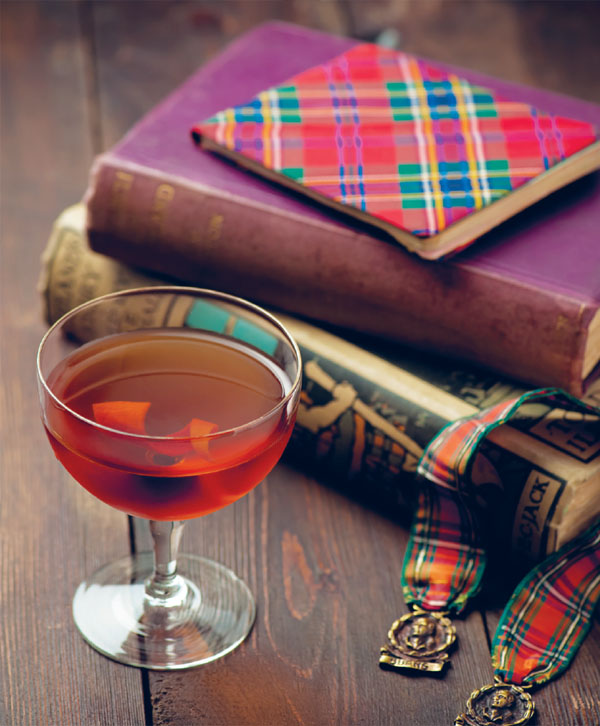
CONTENTS

Hello and welcome. Hm realty glad you could make it.
Contrary to the common public perception of the service industry, the art of bartending is not a simple one. This book focuses on much of the science involved in mixing drinks, but I think its important to stress from the start that bartending itself is an art. Science can be learned and recipes can be memorized, but thats only half the struggle. The other half of the job is playing the raconteur, providing the service and, of course, making it look easy. That kind of stuff is difficult to learn and very hard to teach. Much of it comes with confidence (as it did with me), but there needs to be a certain spark there, the desire to entertain, the ability to engage in mindless mundane chat and the will to do it again and again. Some special people like Dave, the 50-something pub barman I worked with in Cornwall when I was 18, have perfected their craft over decades of standing, pouring, chatting and hosting, to the point where the whole act is entirely seamless.
That said, the facts and know-how do come in handy. I have spent the last ten years gathering as much knowledge as possible about the craft of the cocktail, and this book is a culmination of those efforts. What follows in this introduction is the pared-down story of how my career has developed, along with the people who have influenced me and the discoveries that have shaped me.
THE START
I didnt ever plan on being a bartender. I recall my career meetings at school being more centred around graphic design, performance and movie making. But I suppose that the profession I ended up joining isnt actually a million miles from my original aspirations. Just like a graphic designer, I get to be creative, to shape something from a concept through to reality. Like a stage actor, I have a platform from which I can preach and perform. And like a director, I am the puppet master - a kind of night-time engineer.
After dropping out of university, I wound up back in my home county of Cornwall working in the local pubs and restaurants. Despite feeling like a bit of a failure, all was not lost. What I didnt know then and I do know now is that over the following five years I would be lucky to have a succession of managers and bosses who would allow me almost complete creative freedom and the chance to develop. After spending over a year as a commis chef in a local pub, I moved on to a newly opened restaurant in Polzeath, Cornwall, called the Blue Tomato. I was 19. The aim was to improve my cooking and move up the ranks. Sadly, the kitchen turned out to be fully staffed, so I ended up working on the bar. There were only two bartenders in the operation and I was the lower- ranking one, so when the bar manager walked out after only two days of trading, I was immediately promoted. After less than a week of getting stuck into my new occupation, I was managing my first bar; my career as a cocktail bartender was off to a flying start!
The one major drawback to my promotion, however, was that I had no-one to show me the ropes. I was literally reading cocktails from specification sheets and making them for guests, on my own, for the first time. I was writing order sheets and shut-down procedures without templates, or, in fact, any certainty that order sheets and shutdown procedures were even a real thing! I didnt know it at the time, but the 16 drinks that the restaurant owner had picked at random for the list could not have been a better selection of classic cocktails to cut my teeth on. Everything from the Martini, Manhattan, Julep, Old Fashioned and Whisky Sour were on there - all drinks that I still love to make and that are included in this book. One morning, I got to work early since I planned on making the entire list of drinks as a means of learning them off by heart. Two hours later, the bar looked like a bomb had hit it, but there were 16 perfectly presented drinks to show for it. My boss walked in and I remember her saying, Well, I think weve found our cocktail bartender. Without that encouragement, Im not sure I would have stuck at it.
And I must have been doing something right - the bar got busy and the drinks were received very well. All of my time became consumed with perfecting the cocktail list, researching new drinks and reading lots of cocktail books and bartending manuals. I started featuring a cocktail of the day, which, to begin with, were pulled out of Simon Diffords originalSauce Guide to Cocktails(2001), but after around 18 months, and 500 cocktails later, I began creating my own cocktails and selling them instead. The buzz of conceiving, mixing and presenting a drink, then seeing someone enjoy it and maybe even order it again was an addictive feeling for me. I worked with the chefs in the kitchen to use unusual (at least for the time) ingredients, such as kaffir lime leaves and coriander and caraway in my drinks. I also began using boutique vodkas, specialist liqueurs and Japanese whiskeys (which were all but unheard of in the UK back then).
THE MIDDLE BIT
After two years and two busy summer seasons at the Blue Tomato, I was ready to move on. Fortunately, the fates had conspired and Jamie Oliver was set to open the third branch of his Fifteen restaurant chain in Watergate Bay, Newquay, a 30-minute drive away for me. I applied for the bar manager job, which was probably the top bartending job in Cornwall at the time, but might as well have been the top bartending job in the world at the time as far as I was concerned! After the interview, I phoned to make sure I had made the right impression and the job was offered to me there and then. I was incredibly excited to be working at such a high-profile venue along with, I assumed, other like-minded people. The project had cost around 1.5 million, and Id have my own shiny new bar, complete with eager bar team and even more eager guests!



